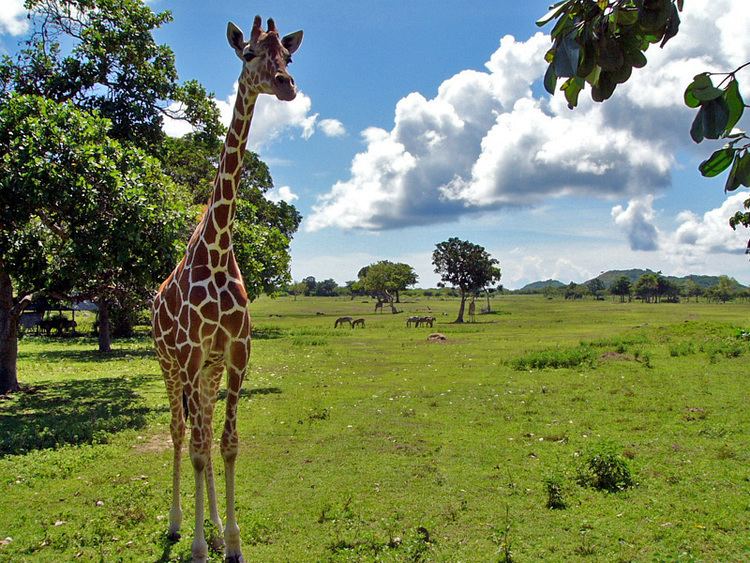Date opened 1976 Opened 1976 Number of animals 1,870 | No. of animals 1,870 Area 37 km² | |
 | ||
Land area 3,700 hectares (9,100 acres) Website www.calauitisland.com/history.html Similar Calamian Islands, Coron Island, Coron Island Loop Tou, Mt Tapyas, Siete Picados | ||
Calauit safari park tour
Calauit Safari Park is a game reserve and wildlife sanctuary located in Calauit Island, a 3,700 hectare island in the Calamian Islands chain that lies off the coast of Palawan in the MIMAROPA region of the Philippines. It is known for its wildlife sanctuary with a substantial population of African animals, including giraffes, zebras, and antelopes, as well as local fauna that all roam freely in a game reserve created by former President Ferdinand Marcos in the 1970s.
Contents
History
On August 31, 1976, under Presidential Proclamation No. 1578, the island was declared a game preserve and wildlife sanctuary. Presumably, the Philippine government was responding to the request of President Jomo Kenyatta of Kenya during a Third World conference for help in saving African wildlife threatened by war and drought. A private, non-profit organization, Conservation and Resource Management Foundation (CRMF), was placed in charge of the forest preserve and wildlife sanctuary.
The secluded Calauit Island was considered the ideal location due to its size, terrain, and vegetation. More than 200 families were relocated to Halsey Island 40 kilometers away to make room for 104 feral African animals from eight species: 12 bushbucks, 11 elands, 11 gazelles, 15 giraffes, 18 impalas, 12 waterbucks, 10 topis, and 15 zebras. The animals were transported to the island by the ship MV Salvador on March 4, 1977. Without natural predators, the population of animals grew to 201 after five years, with 143 animals born on Calauit itself. The waterbuck and impala populations in particular were thriving. The gazelles and topis, however, proved less adaptable and died out by 1999. By 2005 there were approximately 481 specimens in all, with the impalas dominating the population at about 150 heads.
The zebras in the park are Grevy’s zebras are considered the most endangered of the world’s three surviving zebra species. Some of the giraffes seen on the same tour bore the purple marks of iodine that park staff use to treat cuts from the sharp spikes of some local plants. The park also is a haven for indigenous wildlife like the Calamian deer, named for the Calamian islands, the northernmost island cluster in Palawan province, a group that includes Busuanga. There were only 25 left on the island when the park started a conservation effort in 1981, capturing deer for breeding and protecting them once they were released back into the wild. Now there is a thriving herd of 1200. Some of the Filipino species are kept in pens, like the Palawan porcupines. Visitors are allowed to feed them, and apparently they have a passion for bananas.
Endangered local species are also protected in the sanctuary. As of 2005, these included 1,200 Calamian deer, 22 mousedeer, 4 Palawan bearcats, 5 crocodiles, and 2 wild pigs. The sanctuary has also been home to Palawan peacock pheasants, porcupines, sea eagles, wildcats, scaly anteaters, and pythons. There have also been programs to rejuvenate and protect the island’s marine resources, forests, and mangroves. In the island’s waters live dugongs, sea turtles, and giant clams. Calauit’s coral reefs, once badly damaged by invasive fishing practices, have recovered and are now rich breeding grounds for fish and crustaceans.
During the Marcos regime, the preserve was funded by the Office of the President. Today, the sanctuary is administered by the Palawan Council for Sustainable Development (PCSD). In recent years, many of the families that were relocated have attempted to reclaim their land on Calauit but have not been successful. Through Executive Order No. 722 ratified on December 12, 2008, the administration of sanctuary was transferred from the Palawan Council for Sustainable Development to the Provincial Government of Palawan on March 23, 2009. Its name was then changed to Calauit Safari Park. It has become an eco-tourism attraction.
